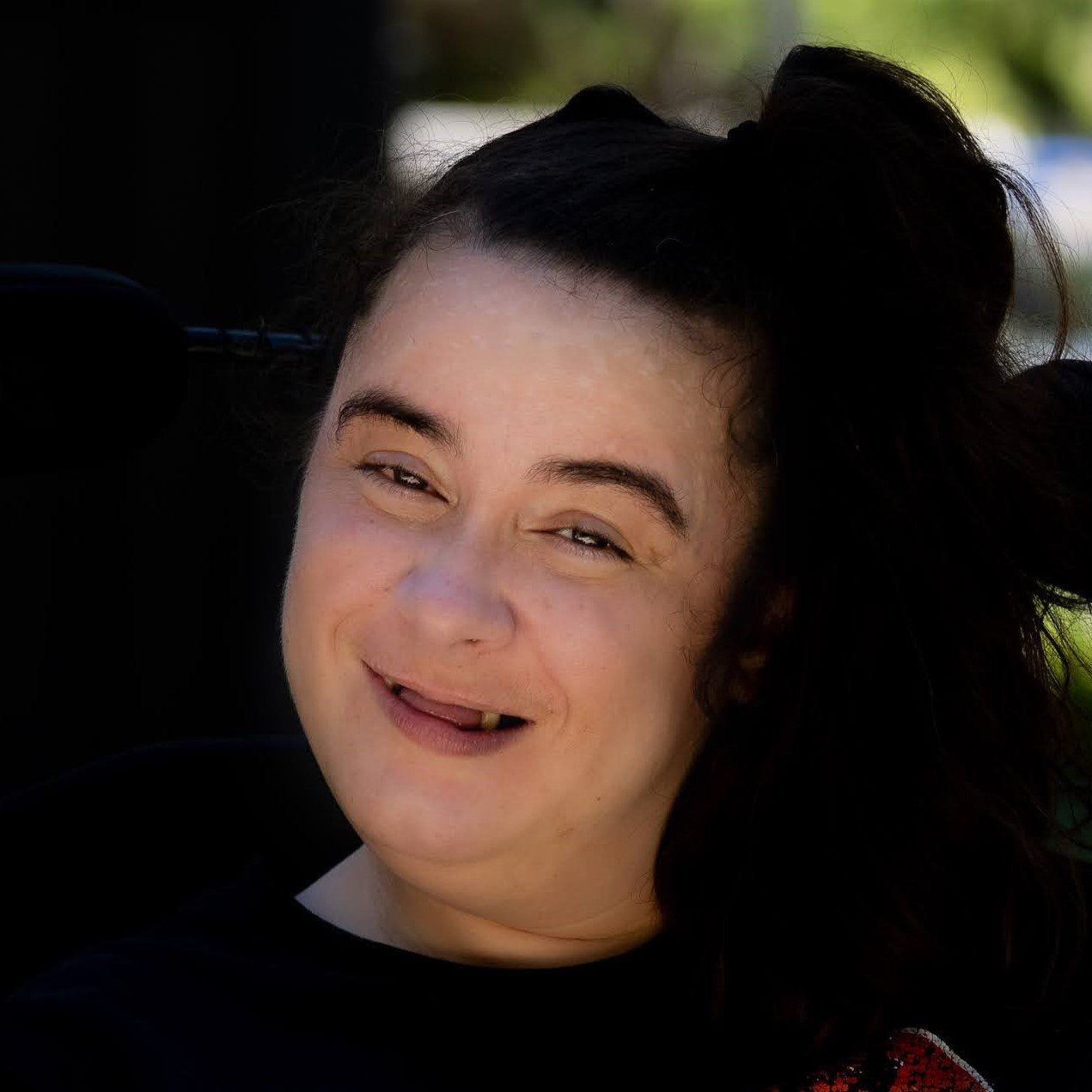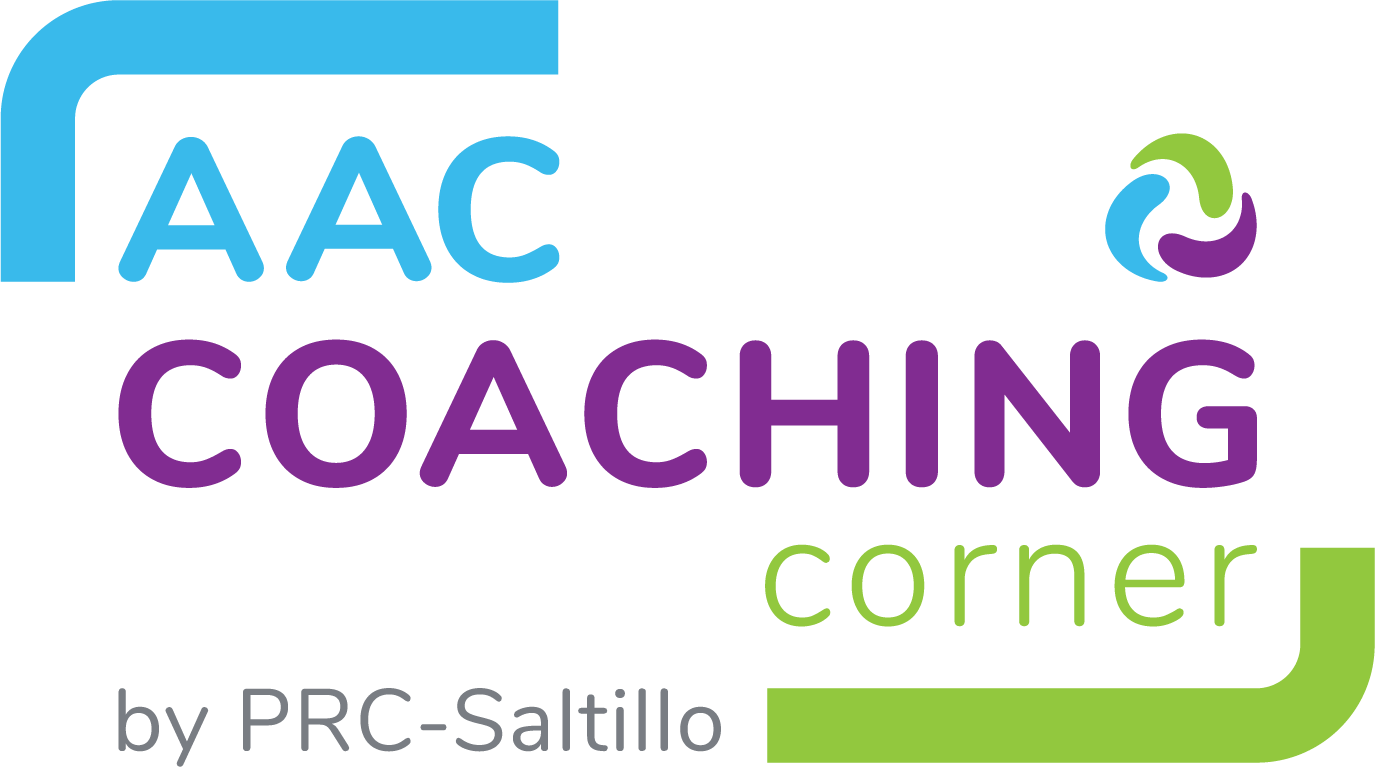
by Stephanie Fassov, PRC-Saltillo Ambassador
Before we dive in, let me ask you this: When you think about your own independence, identity, or sense of connection—what role does communication play? For many people who use augmentative and alternative communication (AAC), the answer is everything. This blog series will explore how communication access shapes identity, relationships, and emotional well-being—and how we can all do better in supporting it.
Hi, I’m Stephanie. I earned both my bachelor’s and master’s degrees in Communication Studies at San José State University. For my master’s project, I focused on the lives of people with significant mobility and communication differences. I explored how they experience independence, autonomy, and their own sense of identity.
My Journey
Over the years, I’ve been very blessed to work and volunteer with people who have a wide range of communication and support needs. For ten years, I volunteered in classrooms for students with complex physical and communication differences. Later, I served as a Court-Appointed Special Advocate and Educational Rights Holder for an older youth with complex developmental needs. I also joined a UC Davis research advisory committee that focused on healthcare inclusion for people with intellectual and developmental differences. Each of these experiences has deepened my understanding of what true support looks like.
Becoming a Personal Coach
Currently, I am getting certifications in transformational life coaching, mindfulness coaching, and mental wellness coaching. My hope and prayer is to help people who use AAC, as well as their support systems, to live value-based lives, be present in the here and now, and get unstuck from unhelpful thoughts and limiting beliefs.
Alongside this, I work as a peer counselor. In this role, I support people in many areas of life—socially, emotionally, mentally, physically, relationally, and spiritually. While I am not a licensed counselor, I use counseling approaches that are evidence-based and research-driven. These methods help my clients grow, heal, and thrive.
My Counseling Approach
My background is in constructive psychotherapy, which focuses on strengths and solutions. This includes:
- Solution-Focused Brief Therapy (SFBT): helping clients identify what’s already working and build on it.
- Narrative Therapy: encouraging people to reframe their stories in ways that highlight resilience and hope.
I also draw from humanistic therapies, such as:
- Person-Centered Therapy: clients lead the way, and I provide empathy and unconditional positive regard.
- Emotion-Focused Therapy: exploring and working through emotional experiences.
- Existential Therapy: making meaning and living authentically.
At times, I integrate tools from:
- Dialectical Behavior Therapy (DBT): skills for mindfulness, emotional regulation, and relationships.
- Acceptance and Commitment Therapy (ACT): noticing unhelpful thoughts and moving toward what truly matters.
Another framework I value is Relational-Cultural Therapy (RCT):, which emphasizes growth through relationships and interdependence—especially powerful in countering barriers like racism and ableism.
Supporting the AAC Community
I also founded AAC Peer Support: Empowering Individuals to Find Their Voice. In addition to counseling, I mentor two teenagers on Zoom—one of whom is also an ambassador. When we meet, I use Self-Determination Theory (SDT), which is all about supporting three core needs:
- Autonomy: having choices and control.
- Competence: feeling capable and confident.
- Connection: having strong, supportive relationships.
I’ve also been honored to lead worship for Device Verses, a Bible study led by Chris Klein for AAC communicators. Music and faith bring people together in such meaningful ways, and this role fills me with gratitude.
In addition, I volunteer with ImpAACt Voices, a nonprofit led by AAC communicators. Planning and co-facilitating sessions alongside people with lived AAC experience has been inspiring—we create spaces for connection, empowerment, and authentic voice.
The Blog Series
Through this work, I will be sharing a series of blog posts. Each one will highlight how communication access connects with identity, relationships, and emotional well-being. I’ll also draw on insights from my master’s research, where I used critical autoethnography—a method that blends personal stories with larger cultural issues like power, privilege, and justice.
What’s Coming Up
Blog 1: Autonomy and AAC
Using Self-Determination Theory, we’ll explore how AAC supports autonomy—helping people make choices, take the time they need, and express themselves in ways that build confidence and respect.
Blog 2: Identity and Expression
Through Erik Erikson’s psychosocial theory, we’ll look at how identity develops and how AAC helps people express personality, preferences, emotions, humor, and stories.
Blog 3: Connection During Holidays
With Relational-Cultural Theory, we’ll see how holidays can be about connection rather than independence—through mutual support, inclusive traditions, and honoring autonomy.
Blog 4: Relationships and Empathy
Continuing with relational-cultural theory, we’ll explore empathy, respect, boundaries, and the everyday work of building friendships as AAC communicators.
Blog 5: Finding Your Own Voice
Using Acceptance and Commitment Therapy (ACT), we’ll focus on how AAC users can find their own values-based voices, rather than echoing others.
Closing Thoughts
Thank you for taking the time to get to know me and the heart behind this work. At its core, communication with AAC is about much more than meeting basic needs—it’s about autonomy, identity, values, and authentic connection. I hope and pray that the blog series sparks reflection and conversation about how we can best support people with AAC and complex communication needs.
Quick Glossary
AAC (Augmentative and Alternative Communication)
Ways of communicating beyond speech—like devices, symbol boards, or apps—that help people express themselves.
Self-Determination Theory (SDT)
People thrive when three needs are met:
– Autonomy: having choices and control
– Competence: feeling capable and confident
– Connection: feeling supported and included
Constructive Psychotherapy
Strength-based approaches, including:
– Solution-Focused Brief Therapy: building on what works
– Narrative Therapy: rewriting personal stories in empowering ways
Humanistic Therapies
Approaches that focus on authenticity and meaning:
– Person-Centered: client leads, therapist listens
– Emotion-Focused: emotions guide healing
– Existential: exploring meaning and purpose
DBT (Dialectical Behavior Therapy)
Skills for managing emotions, stress, and relationships.
ACT (Acceptance and Commitment Therapy)
Noticing unhelpful thoughts and moving toward values-based actions.
Relational-Cultural Therapy (RCT)
Growth through relationships, mutual support, and connection.
Erikson’s Psychosocial Theory
A framework showing how identity develops across life stages.
Critical Autoethnography
A research method that blends personal stories with broader social issues—using lived experience to inspire change.
You must be logged in to post.
Making AAC Work - aac, mental health, independence














